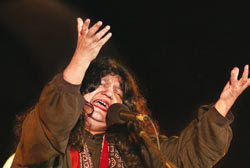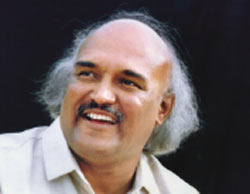IIPM Mumbai Campus
Fresh on the surface, stale inside
Having cast Deepika Padukone, a bit of a new age heroine and Imran Khan, the fresh faced underdog in the Bollywood face of the future race, Danish Aslam did manage to pull off an unconventional lead pair. If only his story in “Break Ke Baad” was not this conventional. “Break Ke Baad” is a dyed in the wool romantic comedy but the romance is quite intolerable and the comedy is sparse. And the been there, seen that feeling is all over, what with a bunch of half cooked romcoms having hit the screen this year. Aaliya (Padukone) is the ambitious girlfriend and Abhay (Khan) the loyal childhood sweetheart. And there’s the usual gripe about space and distance as Aaliya takes off to Australia to follow her dream of becoming an actress only to find Abhay come tumbling after.
The supporting cast and characters, like Abhay’s aunt played by Lilette Dubey and Aaliya’s mom played by Sharmila Tagore are interesting but never rises beyond the impact of a line or two. And while lovely Australian locales and some peppy tunes from Vishal-Shekhar try to uplift the visual appeal and make things look ‘cool’ they can’t mask the lack of substance. You could ignore all that and go by the earnest effort of Imran Khan and call this a one time breezy watch. But a few minutes beyond the innovatively crafted opening credits sequence and it becomes a drag. You’d only be humming Queen’s “I want to break free” by then.
For More IIPM Info, Visit below mentioned IIPM articles.
Fresh on the surface, stale inside
Having cast Deepika Padukone, a bit of a new age heroine and Imran Khan, the fresh faced underdog in the Bollywood face of the future race, Danish Aslam did manage to pull off an unconventional lead pair. If only his story in “Break Ke Baad” was not this conventional. “Break Ke Baad” is a dyed in the wool romantic comedy but the romance is quite intolerable and the comedy is sparse. And the been there, seen that feeling is all over, what with a bunch of half cooked romcoms having hit the screen this year. Aaliya (Padukone) is the ambitious girlfriend and Abhay (Khan) the loyal childhood sweetheart. And there’s the usual gripe about space and distance as Aaliya takes off to Australia to follow her dream of becoming an actress only to find Abhay come tumbling after.
The supporting cast and characters, like Abhay’s aunt played by Lilette Dubey and Aaliya’s mom played by Sharmila Tagore are interesting but never rises beyond the impact of a line or two. And while lovely Australian locales and some peppy tunes from Vishal-Shekhar try to uplift the visual appeal and make things look ‘cool’ they can’t mask the lack of substance. You could ignore all that and go by the earnest effort of Imran Khan and call this a one time breezy watch. But a few minutes beyond the innovatively crafted opening credits sequence and it becomes a drag. You’d only be humming Queen’s “I want to break free” by then.
Management Guru Arindam Chaudhuri Dean Business School IIPM
IIPM Excom Prof Rajita Chaudhuri
Kapil Sibal's voters want Jan Lokpal, not Government-proposed Lokpal Bill
IIPM Prof. Arindam Chaudhuri on For Salman Khurshid, it is a big challenge ahead; and I personally look forward to a revolutionary couple of years ahead!
IIPM Adds Another Feather to Its Cap: This Time Gets the Best Business School of Asia Award
Item Numbers Are The New Mantras of Bollywood
Noida CEO rules out hike in land compensation
IIPM, GURGAON
Rajita Chaudhuri on ‘The Magic of Number 3 in Marketing’
Noida Extn dreams breaks as court scraps new acquisition
IIPM Marches Ahead in B-School Rankings...


